Kimono Symbol Meanings
A guide to Japanese Kimono and textile symbols and meanings. Find out more about this wonderful hidden language and decode the motifs on our vintage Kimono, Uchikake and Obi cushions.
FLORAL MOTIFS:
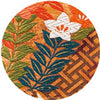 Bellflower (Kikyo) is a white, five petal flower and the symbol of unchanging love, honesty and obedience.
Bellflower (Kikyo) is a white, five petal flower and the symbol of unchanging love, honesty and obedience.
 Cherry Blossom (Sakura) with it’s distinctive notched petals, blooms briefly and is fragile. It symbolises new beginnings, renewal (early Spring), beauty and the transience of life.
Cherry Blossom (Sakura) with it’s distinctive notched petals, blooms briefly and is fragile. It symbolises new beginnings, renewal (early Spring), beauty and the transience of life.
 Iris (Kakitsubata) by a running stream evokes the tenth century ‘Tale of Ise’. A far travelling poet arrives at Yatsuhashi, sees irises in full bloom and is struck by such longing for his wife left in far away Kyoto that he writes a verse for her beginning each line with a syllable from the flower’s name ‘ka-ki-tsu-ba-ta’. Signifies protection from evil spirits.
Iris (Kakitsubata) by a running stream evokes the tenth century ‘Tale of Ise’. A far travelling poet arrives at Yatsuhashi, sees irises in full bloom and is struck by such longing for his wife left in far away Kyoto that he writes a verse for her beginning each line with a syllable from the flower’s name ‘ka-ki-tsu-ba-ta’. Signifies protection from evil spirits.
 Peony (Botan) is known as the ‘King of the Flowers’ and symbolises good fortune (wealth), high honour (nobility) and ageless beauty.
Peony (Botan) is known as the ‘King of the Flowers’ and symbolises good fortune (wealth), high honour (nobility) and ageless beauty.
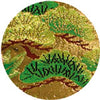 Pine Tree (Matsu) symbolises longevity, steadfastness and wisdom in age. Associated with winter and New Year. Sometimes represented by the pine bark diamond pattern.
Pine Tree (Matsu) symbolises longevity, steadfastness and wisdom in age. Associated with winter and New Year. Sometimes represented by the pine bark diamond pattern.
 Paulownia Tree (Kiri) is a fast growing tree with foxglove-like purple flowers and the only tree the Phoenix will alight upon. Planted when a baby girl is born, the wood is then used to fashion articles for her dowry. Traditional national symbol, often seen in family crests.
Paulownia Tree (Kiri) is a fast growing tree with foxglove-like purple flowers and the only tree the Phoenix will alight upon. Planted when a baby girl is born, the wood is then used to fashion articles for her dowry. Traditional national symbol, often seen in family crests.
 Wisteria (Fuji) signifies love and is also used in many Japanese family crests (Kamon).
Wisteria (Fuji) signifies love and is also used in many Japanese family crests (Kamon).
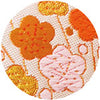 Plum Blossom (Ume) is the first flower to bloom in the spring and is known as the ‘Flower of Peace’. A protective charm against evil, it also represents longevity, renewal and perseverance. Identified by rounded petals.
Plum Blossom (Ume) is the first flower to bloom in the spring and is known as the ‘Flower of Peace’. A protective charm against evil, it also represents longevity, renewal and perseverance. Identified by rounded petals.
 Chrysanthemum (Kiku) (and Spider chrysanthemum with wild tendril petals) is an auspicious symbol of regal beauty, rejuvenation and longevity. Used as the Imperial Seal of Japan, it also represents autumn and is associated with the Chrysanthemum Festival (Kiku-no-Sekku) held on the 9th day of the 9th month.
Chrysanthemum (Kiku) (and Spider chrysanthemum with wild tendril petals) is an auspicious symbol of regal beauty, rejuvenation and longevity. Used as the Imperial Seal of Japan, it also represents autumn and is associated with the Chrysanthemum Festival (Kiku-no-Sekku) held on the 9th day of the 9th month.
"In the second month the peach tree blooms,
But not 'til the ninth the chrysanthemums;
So each must wait 'til his own time comes. -T'au Yuan-Ming (A.D.372-427)
PATTERNS:
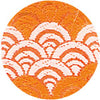 Seigaiha is a pattern of overlapping circles, symbolic of waves and the ebb and flow of life.
Seigaiha is a pattern of overlapping circles, symbolic of waves and the ebb and flow of life.
 Shippo is an infinitely repeating circular design representing the seven jewels or treasures from the Buddhist Sutras.
Shippo is an infinitely repeating circular design representing the seven jewels or treasures from the Buddhist Sutras.
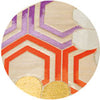 Hexagons represent the pattern on a tortoise shell and signify longevity and good fortune. Also traditional inspiration for Samurai armour designs.
Hexagons represent the pattern on a tortoise shell and signify longevity and good fortune. Also traditional inspiration for Samurai armour designs.
 Diamonds or Pine Bark Diamond Pattern –see Pine Tree (Matsu).
Diamonds or Pine Bark Diamond Pattern –see Pine Tree (Matsu).
OTHER SYMBOLS:
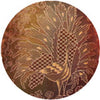 Peacock (Kujaku) This bird is associated with love, good will, nurturing, and a kind heart.
Peacock (Kujaku) This bird is associated with love, good will, nurturing, and a kind heart.
 Cranes (Tsuru) are believed to live for a thousand years and inhabit the land of the immortals. Symbolise longevity and good fortune. A pair represent a happy marriage.
Cranes (Tsuru) are believed to live for a thousand years and inhabit the land of the immortals. Symbolise longevity and good fortune. A pair represent a happy marriage.
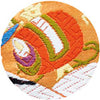 Drum (Taiko) A drum represents joy. Ivy growing over a drum (used to warn of war) signifies peace.
Drum (Taiko) A drum represents joy. Ivy growing over a drum (used to warn of war) signifies peace.
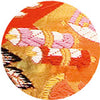 Scrolls represent learning, knowledge and a cultured life. One of the Myriad Treasures.
Scrolls represent learning, knowledge and a cultured life. One of the Myriad Treasures.
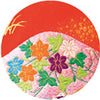 Mountains (Yama) depict sacred places between heaven and earth. Birds flying over mountains signify overcoming life’s challenges.
Mountains (Yama) depict sacred places between heaven and earth. Birds flying over mountains signify overcoming life’s challenges.
 River (Kawa) or winding stream represents continuity and the future.
River (Kawa) or winding stream represents continuity and the future.
© Hunted and Stuffed. All rights reserved.
